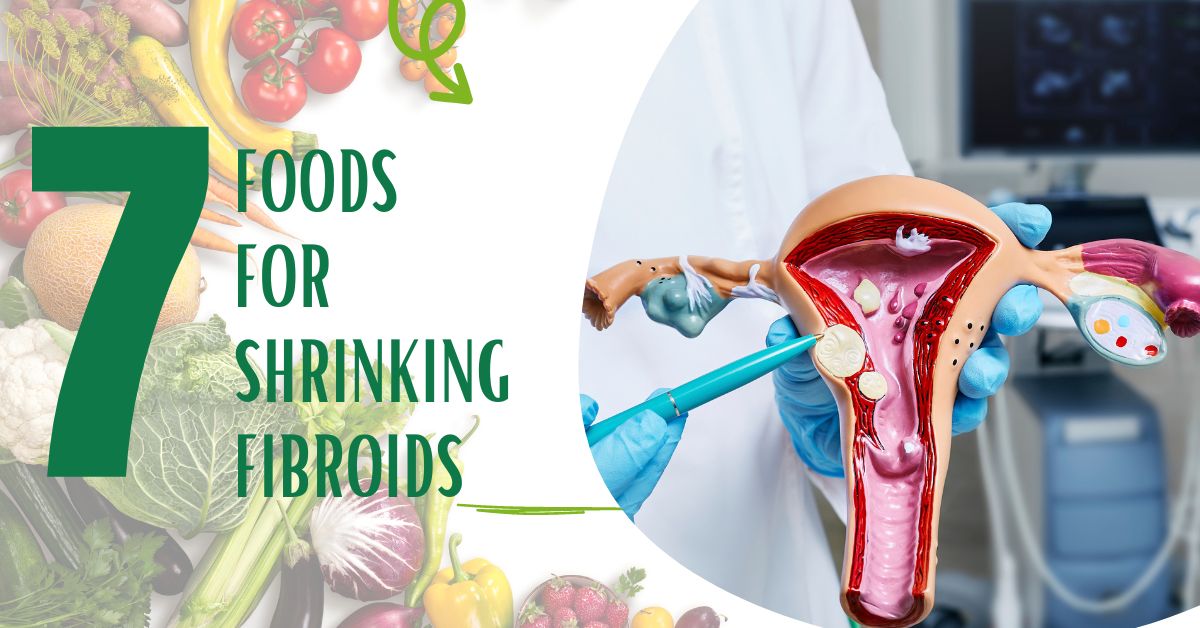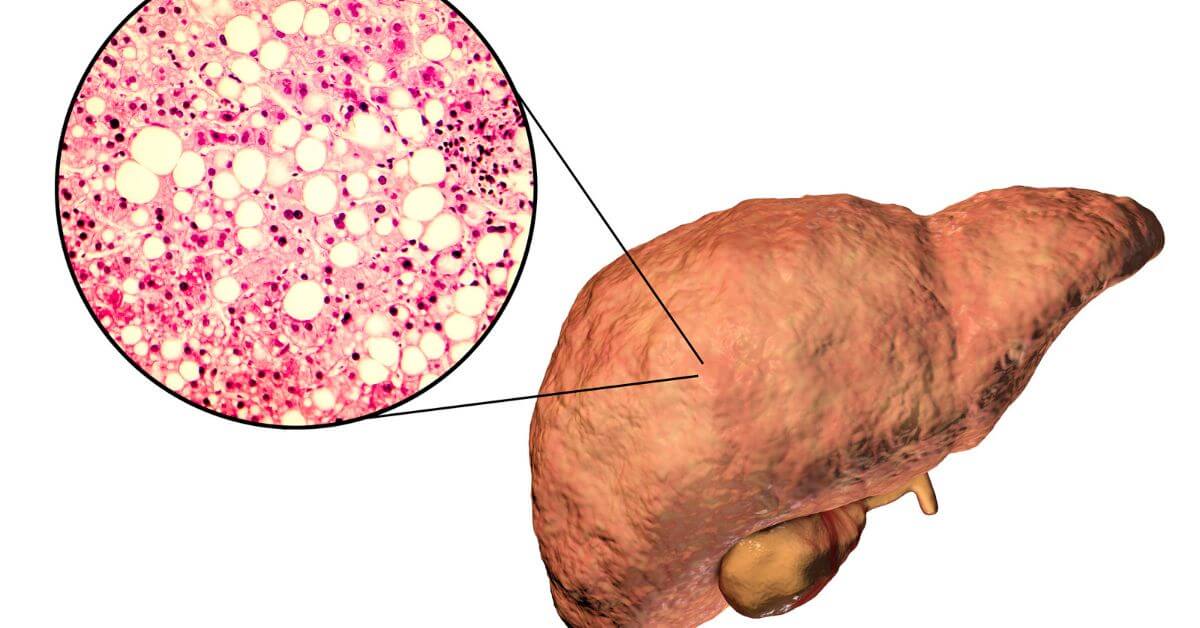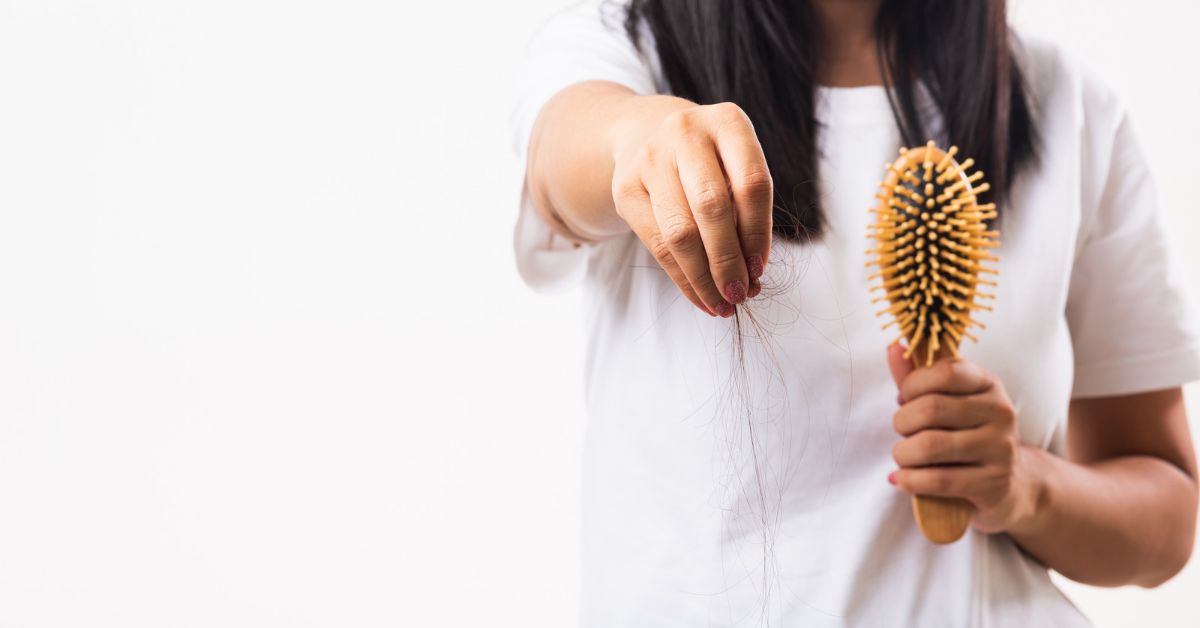Fibroids are non-cancerous growths that develop in the uterus, affecting many women’s health and quality of life. While various treatment options exist, using natural foods to shrink fibroids is gaining popularity due to their potential benefits and minimal side effects. In this article, we will explore the role of diet in fibroid shrinkage and unveil seven powerful foods for shrinking fibroids that naturally aid in reducing fibroid size.
what are Fibroids?
Fibroids are benign tumors that form in the uterus, typically during a woman’s reproductive years. They can cause symptoms such as heavy menstrual bleeding, pelvic pain, frequent urination, and abdominal bloating. Understanding the nature and impact of fibroids is crucial for exploring effective management strategies.
what is The Role of Diet in Fibroid Shrinkage?
Diet plays a significant role in fibroid growth and size. Certain foods possess properties that can help inhibit fibroid development and promote shrinkage. By incorporating specific dietary choices, individuals can optimize their nutritional intake to support fibroid management and overall well-being.
7 Powerful Foods for Shrinking Fibroids
1. Green Leafy Vegetables
- Rich in Nutrients: Green leafy vegetables like kale, spinach, collard greens, and Swiss chard are packed with essential vitamins, minerals, and antioxidants. These nutrients are crucial for maintaining a healthy immune system, promoting cellular repair, and supporting overall well-being.
- High in Fiber: Fiber plays a vital role in regulating digestion and promoting bowel regularity. By including green leafy vegetables in your diet, you can increase your fiber intake, which may help prevent constipation and promote efficient waste elimination.
- Antioxidant Properties: Green leafy vegetables contain antioxidants such as vitamin C, vitamin E, and beta-carotene. These antioxidants help neutralize harmful free radicals in the body, reducing oxidative stress and inflammation, which can indirectly contribute to better overall health.
- Phytochemicals and Bioactive Compounds: Green leafy vegetables are abundant in phytochemicals and bioactive compounds, including flavonoids and carotenoids. These compounds have been associated with various health benefits, including anti-inflammatory and anticancer properties.
- Hormonal Balance: Fibroids are influenced by hormonal imbalances, particularly estrogen dominance. Green leafy vegetables contain phytoestrogens, which are plant compounds that can help balance hormone levels by binding to estrogen receptors. This may indirectly support fibroid management.
- Weight Management: Maintaining a healthy weight is important for managing fibroids. Green leafy vegetables are low in calories and high in nutrients, making them a beneficial choice for weight management and supporting healthy body composition.
2. Turmeric
- Anti-inflammatory properties: Curcumin, the key bioactive compound in turmeric, possesses strong anti-inflammatory properties. Inflammation is believed to play a role in fibroid growth and symptoms. By reducing inflammation in the body, curcumin may indirectly support fibroid management.
- Hormonal regulation: Turmeric has been studied for its potential effects on hormone balance. Hormonal imbalances, particularly estrogen dominance, can contribute to fibroid growth. Curcumin has been shown to modulate estrogen receptors and influence hormone levels, which may have implications for fibroid management.
- Antioxidant activity: Turmeric contains antioxidants that help combat oxidative stress by neutralizing harmful free radicals in the body. Oxidative stress has been linked to various health conditions, including fibroids. By reducing oxidative stress, turmeric may support overall health and potentially contribute to fibroid management.
- General well-being: Turmeric is widely recognized for its overall health benefits. It may support immune function, aid digestion, and promote liver health. Maintaining overall well-being is crucial for managing fibroids, as a healthy body can better handle health challenges.
3. Flaxseeds
- Estrogen regulation: Flaxseeds contain lignans, which are plant compounds with estrogen-modulating properties. Since fibroids are influenced by estrogen levels, flaxseeds may help regulate estrogen balance in the body. By binding to estrogen receptors, lignans can potentially reduce estrogen activity and inhibit fibroid growth.
- Anti-inflammatory properties: Chronic inflammation is believed to contribute to fibroid development and symptoms. Flaxseeds contain omega-3 fatty acids, which have anti-inflammatory effects. By reducing inflammation, flaxseeds may indirectly support fibroid management.
- Fiber content: Flaxseeds are rich in dietary fiber, particularly soluble fiber. Fiber plays a crucial role in promoting healthy digestion and regulating bowel movements. By supporting regular bowel movements, flaxseeds may help minimize constipation and optimize waste elimination.
- Overall nutritional value: Flaxseeds are packed with essential nutrients, including vitamins, minerals, and antioxidants. They are a good source of plant-based protein and healthy fats, such as omega-3 fatty acids. Incorporating flaxseeds into your diet can contribute to overall nutritional wellness and support your body’s natural healing processes.
4. Cruciferous Vegetables
- Indole-3-carbinol (I3C): Cruciferous vegetables contain a compound called indole-3-carbinol (I3C). When ingested, I3C is converted into other compounds, such as diindolylmethane (DIM). These compounds have been studied for their potential effects on estrogen metabolism. Since fibroids are influenced by estrogen levels, cruciferous vegetables may help promote estrogen balance in the body.
- Hormone modulation: I3C and DIM can affect the balance of estrogen metabolites, potentially favoring the production of less active and potentially less proliferative forms. This modulation may contribute to a reduction in estrogen-driven fibroid growth.
- Anti-inflammatory and antioxidant properties: Cruciferous vegetables contain various antioxidants and anti-inflammatory compounds, such as vitamins C, E, and K, and sulforaphane. These properties help reduce inflammation and oxidative stress, which can indirectly support fibroid management.
- High in fiber: Cruciferous vegetables are also high in dietary fiber. Fiber plays a crucial role in promoting healthy digestion and regular bowel movements. Adequate fiber intake can help optimize waste elimination and minimize constipation, which is beneficial for overall health and fibroid management.
5. Garlic
- Anti-inflammatory properties: Garlic contains compounds like allicin, which have been shown to possess anti-inflammatory properties. Inflammation is believed to contribute to fibroid growth and symptoms. By reducing inflammation in the body, garlic may indirectly support fibroid management.
- Antioxidant activity: Garlic is rich in antioxidants, including selenium and vitamin C. These antioxidants help combat oxidative stress and neutralize free radicals, which can contribute to various health conditions, including fibroids. By reducing oxidative stress, garlic may support overall health and potentially contribute to fibroid management.
- Circulatory benefits: Garlic is known to have vasodilatory effects, which means it helps relax and widen blood vessels. Improved blood circulation may facilitate nutrient delivery and waste removal, potentially aiding in the management of fibroids.
- Immune system support: Garlic has antimicrobial properties and has been used traditionally for its immune-boosting effects. A strong immune system is important for overall health and may indirectly support the body’s ability to manage fibroids.
6. Berries
- Antioxidant-rich: Berries are packed with antioxidants, including anthocyanins, flavonols, and vitamin C. These antioxidants help combat oxidative stress and neutralize free radicals in the body. Oxidative stress has been associated with the development and progression of various health conditions, including fibroids. By reducing oxidative stress, berries may support overall health and potentially contribute to fibroid management.
- Anti-inflammatory properties: Berries contain compounds that have demonstrated anti-inflammatory effects. Chronic inflammation is believed to contribute to fibroid growth and symptoms. By reducing inflammation in the body, berries may indirectly support fibroid management.
- Nutrient-dense: Berries are low in calories but rich in essential vitamins, minerals, and dietary fiber. They provide a wide range of beneficial nutrients, including vitamin C, manganese, and various phytochemicals. A balanced and nutrient-rich diet is important for overall health and may indirectly contribute to fibroid management.
- Fiber Content: Berries are a good source of dietary fiber, including soluble and insoluble fiber. Adequate fiber intake is beneficial for overall health and may indirectly support fibroid management.
7. Legumes
- Hormonal balance: Legumes are a good source of plant-based proteins, which can contribute to hormone balance. Hormonal imbalances, particularly estrogen dominance, can influence fibroid growth. Including legumes in your diet may help support hormonal balance, potentially aiding in fibroid management.
- Fiber Content: Legumes are high in dietary fiber, including soluble and insoluble fiber. Adequate fiber intake is crucial for maintaining regular bowel movements and supporting optimal digestion. By promoting healthy digestion and waste elimination, legumes may indirectly support fibroid management.
- Nutrient-rich: Legumes provide a variety of essential nutrients, including vitamins, minerals, and plant-based protein. They are also a good source of iron, which is important for maintaining overall health. A well-rounded diet that includes legumes can provide a range of nutrients necessary for the body’s natural healing processes.
- Plant compounds: Legumes contain beneficial plant compounds, such as phytoestrogens and flavonoids. Phytoestrogens have estrogen-like effects in the body and may help modulate hormone levels. Flavonoids have antioxidant and anti-inflammatory properties, which can support overall health.
Additional Dietary Tips for Fibroid Shrinkage
Foods for Shrinking fibroids are powerful but certain dietary tips can further enhance fibroid management and shrinkage. Hydration is crucial for flushing out toxins, while portion control and maintaining a healthy weight can help regulate hormone levels. Avoiding processed foods, sugars, and caffeine also supports fibroid reduction.
Shrinking fibroids naturally is a topic of interest for many individuals seeking alternative methods for fibroid management. While it’s important to consult with a healthcare professional for personalized advice, there are several strategies you can consider to support natural fibroid reduction. Some approaches that may help:
1. Diet Modifications:
– Incorporate foods rich in antioxidants: Fruits and vegetables contain antioxidants that help combat inflammation and promote overall health. Focus on consuming a variety of colorful fruits and vegetables daily.
– Choose whole grains: Opt for whole grains like quinoa, brown rice, and whole wheat bread, as they provide essential nutrients and fiber.
– Include lean proteins: Incorporate lean sources of protein such as fish, poultry, tofu, and legumes into your meals to support tissue repair and hormone balance.
– Reduce processed foods and refined sugars: Limit the intake of processed foods and sugary snacks, as they can contribute to inflammation and hormonal imbalance.
2. Herbal Remedies:
– Vitex agnus-castus: Also known as chaste berry, this herb may help regulate hormone levels and reduce the growth of fibroids. It is available as a supplement.
– Green tea: Rich in antioxidants, green tea may help reduce inflammation and support overall health. Enjoy a cup or two daily.
3. Lifestyle Changes:
– Maintain a healthy weight: Excess weight can contribute to hormonal imbalances and exacerbate fibroid growth.
– Manage stress: Chronic stress can disrupt hormone balance. Add Meditation, yoga, or deep breathing exercises into your routine.
– Stay hydrated: Drink an adequate amount of water daily to support detoxification and overall health.
4. Natural Supplements:
– Omega-3 fatty acids: Found in fatty fish, flaxseeds, and chia seeds, omega-3 fatty acids have anti-inflammatory properties that may help reduce inflammation associated with fibroids.
– Vitamin D: Adequate vitamin D levels are important for overall health and hormone regulation. Consider getting your vitamin D levels checked and discuss supplementation with your healthcare provider if necessary.
5. Alternative Therapies:
– Acupuncture: Some studies suggest that acupuncture may help alleviate symptoms associated with fibroids. Consult a qualified acupuncturist for personalized treatment.
– Uterine artery embolization (UAE): This minimally invasive procedure is not natural but is considered a non-surgical alternative to remove or shrink fibroids. Consult with a healthcare provider to explore this option.
Remember, natural approaches may not work for everyone, and the effectiveness may vary. It’s essential to consult with a healthcare professional who can provide personalized guidance based on your specific situation and medical history. They can help you determine the best course of action for managing fibroids naturally or with other appropriate treatments.
How to know about fibroids?
Checking for fibroids at home is not possible without medical equipment and expertise. While there are some self-examination techniques for certain health conditions, diagnosing fibroids requires a comprehensive evaluation by a healthcare professional. Here are the recommended steps to identify and diagnose fibroids:
1. Pay attention to symptoms: Take note of any symptoms you may be experiencing, such as heavy or prolonged menstrual bleeding, pelvic pain or pressure, frequent urination, or abdominal bloating. These symptoms can indicate the presence of fibroids.
2. Consult with a healthcare professional: Schedule an appointment with your primary care physician or a gynecologist. They will perform a physical examination and evaluate your symptoms to determine if further testing is needed.
3. Diagnostic tests: If fibroids are suspected, your healthcare provider may recommend the following diagnostic tests:
a. Ultrasound: This imaging test uses sound waves to create images of your uterus and can help identify the presence, size, and location of fibroids.
b. MRI (Magnetic Resonance Imaging): An MRI can provide more detailed images of the uterus and fibroids, assisting in diagnosis and treatment planning.
c. Hysteroscopy: In this procedure, a thin, lighted instrument called a hysteroscope is inserted through the vagina and cervix into the uterus, allowing the doctor to visually examine the uterine cavity for fibroids.
d. Biopsy: If there are concerns about cancerous growths, a small sample of tissue may be taken for laboratory analysis (usually done during a hysteroscopy or other surgical procedure).
4. Follow medical advice: Based on the diagnostic results, your healthcare provider will discuss the findings with you and provide appropriate recommendations for treatment or further monitoring.
It’s important to note that self-diagnosis or self-examination methods are not sufficient or reliable for diagnosing fibroids. Seeking professional medical guidance is crucial for accurate diagnosis and the development of a personalized treatment plan.






